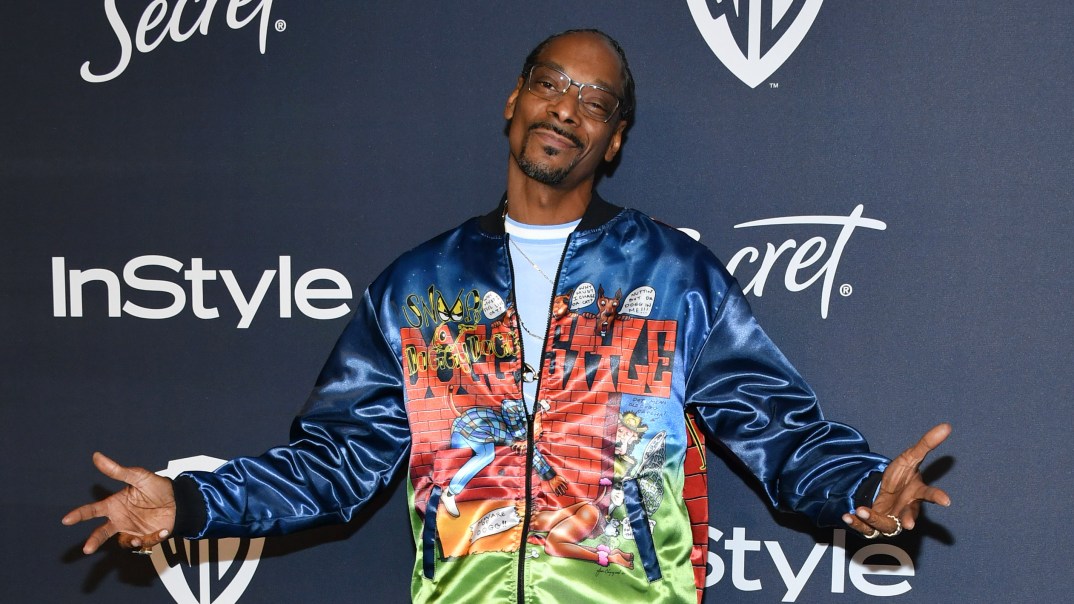‘Doggystyle,’ which turns 30, was the first album whose impact I was able to experience in real-time
OPINION: The experience of listening to Snoop Dogg’s 1993 debut album the day it came out was a first for me as a military brat who grew up overseas.

Editor’s note: The following article is an op-ed, and the views expressed are the author’s own. Read more opinions on theGrio.
Growing up overseas as a hip-hop head (well, burgeoning at the time; I lived in Germany from ages 6-14) was an interesting experience. While it was the mid-’80s, the military made sure that military families had access to all of the best of American pop culture — a lot of it was just super delayed. Movies that arrived stateside in, say, February of any year, wouldn’t hit our theaters on base until maybe June or July.
The vast majority of us relied on our stateside families to send us VHS tapes of shows and cassette tapes of music to keep us as up-to-date as possible with the latest and greatest. Then, during summer, we’d all go to our respective homes across the United States of America and be caught up for a few months before returning home to Germany (or wherever our parents were stationed) only to fall behind. Wash, rinse, repeat.
Also during this time, military families had one radio station and one television station. It’s why all of us who grew up overseas in the ’80s and ’90s can tell you the entire plotlines to “Guiding Light” and “General Hospital,” the only two soap operas that played on our TV and radio provider, the Armed Forces Network. So while most of us had an idea of what the hot groups and television shows were, especially in the early ’90s, we only saw them on VHS tapes and much later than they aired in America. The fashion trends of Black pop culture trickled over and then caught on … again, just late. This phenomenon was especially glaring when it came to hip-hop music, which was REALLY taking over in the early ’90s. The wave that Ice Cube or Public Enemy or N.W.A. created in America was more of a current hitting the beach in Germany.
By the time I got up on Dr. Dre’s “The Chronic,” somewhere in early 1993, its impact on hip-hop and culture was in full swing in America. I never got to see or feel how landmark albums by A Tribe Called Quest, De La Soul, Brand Nubian, etc. hit the culture. To be fair though, I was not much of a New York hip-hop head back then. While this sounds blasphemous now, at 14, I couldn’t have cared one bit about the Wu-Tang Clan’s “Enter the Wu-Tang (36 Chambers)” or A Tribe Called Quest’s “Midnight Marauders” — two ABSOLUTE landmark albums that dropped on Nov. 9, 1993 — so maybe I would have ignored that impact, anyway.
That all changed in November 1993. Actually, earlier than that. As I said, I was in Germany when Dr. Dre’s “The Chronic” dropped in December 1992, but much like in America, when we got ahold of it, we ALL knew something was different about music. And we all realized how special Snoop Doggy Dogg (now Snoop Dogg) was. I moved back to the States for good in June 1993. I spent that summer between Michigan, Alabama and Georgia with family. And then we moved to Madison, Alabama, in August 1993. My parents, in all of their infinite wisdom, had cable with MTV and BET so I watched “Rap City” at its actual scheduled time after school. I was in heaven.
I don’t know exactly when the video for Snoop Dogg’s “What’s My Name?” dropped, but I do remember how that was all everybody could talk about at school. Me? I was able to have conversations with my peers about the same stuff at the same time. Do you know how exciting that was? We knew Snoop Dogg’s debut album, “Doggystyle,” was on the way and because of how good “The Chronic” was, expectations were high. I remember arguing about whether or not Snoop was one of the best to ever do it (funny in retrospect) in the hallways of Bob Jones High School.
When “Doggystyle” officially dropped on Nov. 23, 1993, I felt the wave. Because Dr. Dre was a national phenomenon, and down South, we tended to especially love West Coast music, EVERYBODY came to school the next day talking about the album. It was right in the middle of basketball season (I was the freshman basketball team manager; I was also like 5’1”), and I can vividly remember kids trying to claim songs as theirs (I have no idea what that meant now that I think about it) and how everybody wanted to lay claim to “Doggy Dogg World.” I remember rolling in older kids’ cars and that being the only album we listened to; it felt good to FINALLY see what it was like to be part of a cultural movement in real-time — everybody knew Snoop was a game-changer of an artist and this album was his statement album.
Before “Doggystyle” I had to be told what was hot or happen upon it via one of my older sister’s mixtapes or a VHS tape sent from family or borrowed from a friend. But in 1993, “Doggystyle” was the first album I got to experience in real-time with the culture upon its release. That was 30 years ago, when I was 14 years old and becoming the hip-hop head my heart and soul wanted me to be and I’ve been rolling with this album ever since.

Panama Jackson is a columnist at theGrio. He writes very Black things, drinks very brown liquors, and is pretty fly for a light guy. His biggest accomplishment to date coincides with his Blackest accomplishment to date in that he received a phone call from Oprah Winfrey after she read one of his pieces (biggest), but he didn’t answer the phone because the caller ID said: “Unknown” (Blackest).
Make sure you check out the Dear Culture podcast every Thursday on theGrio’s Black Podcast Network, where I’ll be hosting some of the Blackest conversations known to humankind. You might not leave the convo with an afro, but you’ll definitely be looking for your Afro Sheen! Listen to Dear Culture on TheGrio’s app; download it here.


